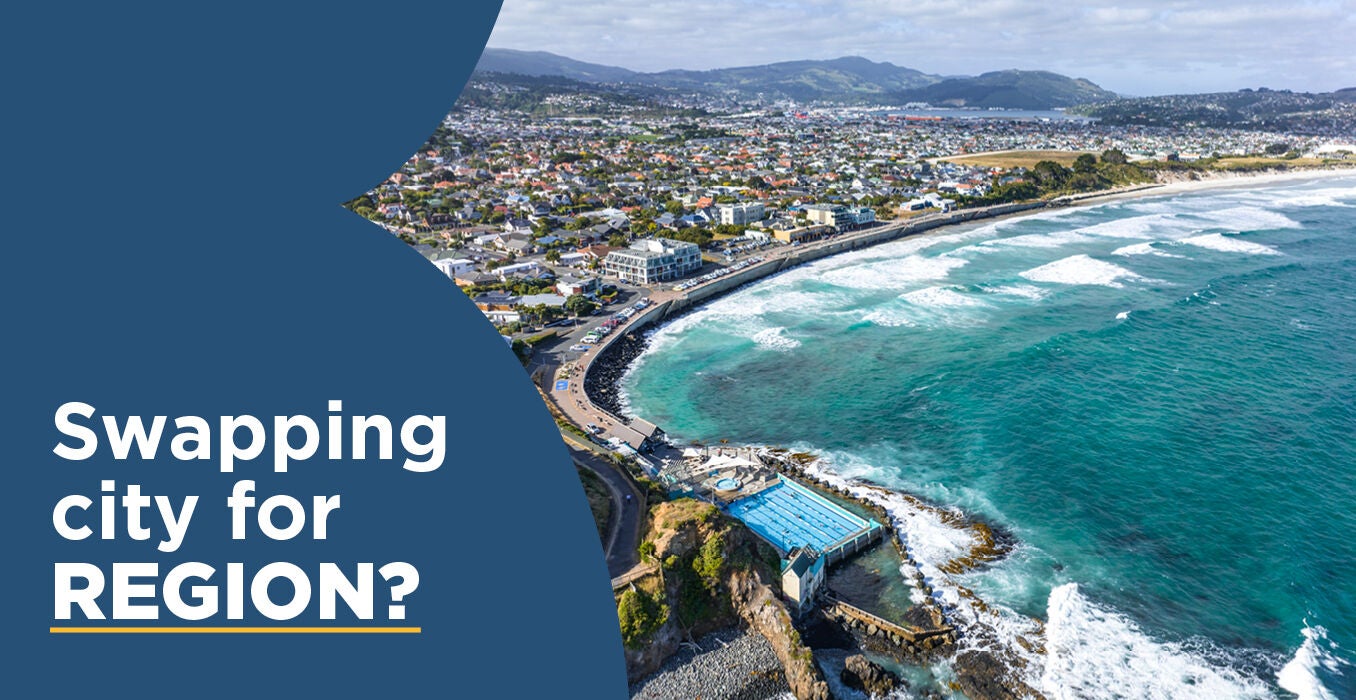
Residential -
On the move; what’s causing the drain from our biggest cities?
More Kiwi's are turning their backs on big city life and embracing the regions, with data showing populations like Otago and Bay of Plenty all grew faster than the national average.
Auckland saw the biggest loss from internal migration, but Economist Cameron Bagrie says it’s not the only big city experiencing a drain.
Stats NZ also revealed Hamilton, Wellington and Christchurch reported net internal losses.
“If you look at what's going on, there's a theme here where cities are losing out to the periphery. It’s a consistent theme - Wellington loses out to Wairarapa, Christchurch loses out to Selwyn, Auckland loses out to Cambridge and parts of Waikato ” says Bagrie.
WHERE ARE THEY GOING?
Queenstown Lakes had the biggest increase in population, growing 8 percent in the year to June 2023 - 1100 of which was through net internal migration.
Canterbury's Selwyn and Mackenzie District also grew by 5.2 and 3.6 percent respectively.
Bagrie says the motivation to move comes from a range of sources.
“There's the retirement factor. People are cashing up and looking at living somewhere else. The classic beneficiary of that is somewhere like Cambridge.”
“Working from home has led to greater flexibility as transport connectivity has improved in some regions. Affordability is also a big driver, as the general rule of thumb is that you’re going to pay more per square metre for something that’s in the city, compared to something that’s out in the periphery.”
But while a move away from the city may save you money in the short term, there’s some concern that these smaller centres may not be able to keep up with population demand.
“A whole lot of regions have been big beneficiaries of internal and external migration, but it's questionable whether the infrastructure is keeping up, a prime example of that is Queenstown.”
That’s things like schools, supermarkets and roads. It follows reports earlier this year that revealed many workers in the resort town were forced to live in cars due to the shortage of rental properties.
Bagrie believes the regions aren’t responding fast enough to growth.
“If you look more broadly, local authority models across New Zealand are broken. It doesn't matter whether you look at what happened with Three Waters, or whether you look at what else they need to fund in regard to infrastructure. There's just not enough cash to go around.”
“Either their cash comes from somewhere else, or rates need to go up a lot.”
WHAT DOES THAT MEAN FOR HOUSE PRICES?
Bagrie says the flow on effect of internal migration for house prices whittles down to the basic laws of supply and demand.
“You're not gonna see too much of an impact on house prices, if the demand has been matched by the supply. It's where you're not seeing the supply, or there's constraints around supply that you see the market go nuts like in Queenstown.”
So while you might be shifting for a better deal, you might not always get it if you’re competing with others who are also choosing the most popular periphery centres.
There’s unlikely to be much reprieve for those looking to buy in the main centres too. Because despite losing many people from internal migration, Bagrie says those numbers are often offset by people arriving from overseas.
“A classic example here is Auckland. The city loses people constantly, [typically between 10,000 and 14,000 people to internal migration per year], but because of external migration its population still grows.”
That means the demand for housing also grows too.
WILL THE MOVEMENT CONTINUE?
Bagrie expects the various drivers of internal migration to “wax and wane”.
“Certainly one that I think is going to intensify over the coming years is the population of retirees who need to shift out of Auckland to release equity, because they need to fund things like rates and health insurance.”
And without investing or building more to accommodate demand, Bagrie says the only way to slow the strain on regional infrastructure is to slow internal migration.
“You need to be able to deliver on the proposition as to why people shifted in the first place. If that can’t be done, and if people are pretty mobile then they’ll go somewhere else.”
“That’s addressing things like affordability, transport and work availability.”
Bagrie says while Queenstown might be experiencing a surge right now, the pendulum could swing the opposite way.
“How can Queenstown continue with that sort of population growth in the absence of a big change in infrastructure?”